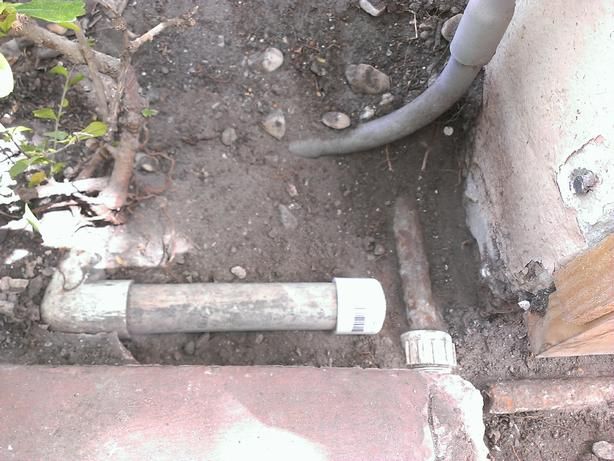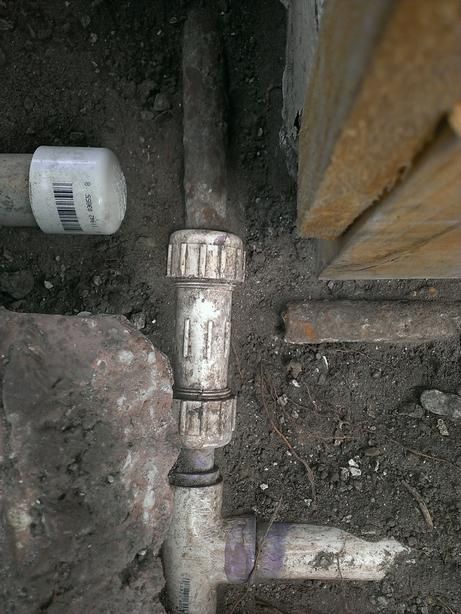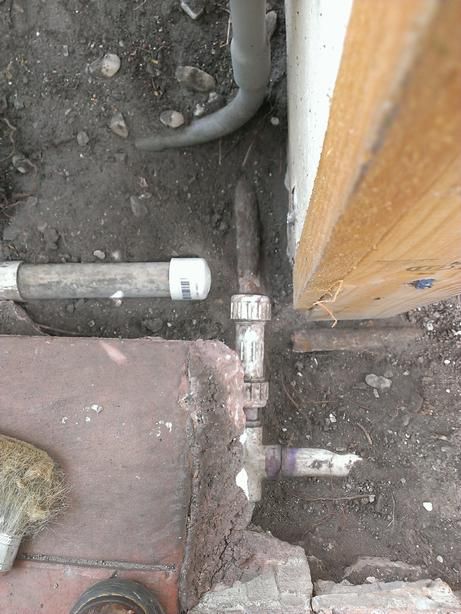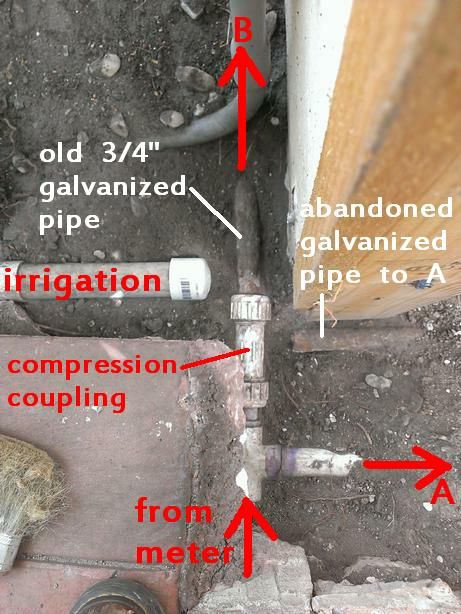 
Over 698,000 strictly plumbing related posts
Plumbing education, information, advice, help and suggestions are provided by some of the most experienced plumbers who wish to "give back" to society. Since 1996 we have been the best online (strictly) PLUMBING advice site. If you have questions about plumbing, toilets, sinks, faucets, drains, sewers, water filters, venting, water heating, showers, pumps, and other strictly PLUMBING related issues then you've come to the right place. Please refrain from asking or discussing legal questions, or pricing, or where to purchase products, or any business issues, or for contractor referrals, or any other questions or issues not specifically related to plumbing. Keep all posts positive and absolutely no advertising. Our site is completely free, without ads or pop-ups and we don't tract you. We absolutely do not sell your personal information. We are made possible by: 
|
|
Author:
sum (FL)
Due to the front yard being 90% concrete driveway, I was never sure where the water line from the meter goes, and I know sooner or later I need to resolve the badly corroded galvanized line that goes to one of the units.
Here is the situation, I have a duplex with two units A and B. Each unit has it's own shutoff valve on opposite sides of the building. Unit A has a 3/4" PVC line that goes to the valve, and unit A has good volume. Unit B however is all the way on the other side, and it's shutoff valve is connected to a badly corroded 3/4" galvanized line living on borrowed time. Unit B has low volume, same pressure, but if I hook up the same hose and nozzle I can tell the water coming out of the hosebib at shutoff B is almost half of that of A, very weak.
So this weekend I spent some time digging around the front yard to try and figure out where the water line splits into A (which is PVC) and B (which is galvanized) and I found it. So here is the general layout of the line. Note that A is much closer to the meter, and B is much farther.

Where I found the tee is circled in red. Here are some close up pictures.



The one below is annotated as to what is what.

As you can see, the building corner is to the NE. The 1" PVC line coming from the meter emerges from the south. It is connected to a PVC TEE. This branch that connects to a 1" PVC line running East goes to unit A. The other end of the TEE has a 1X3/4 bushing, then a short piece of 3/4" pipe, then it goes into a compression coupling connecting to a 3/4" galvanized pipe. This galvanized pipe runs another 65 feet to unit B's shutoff valve. You can see the original galvanized pipe that goes to unit A being abandoned. ALl pipes inside the building are type L copper.
So here are my questions.
(1) Can you use a compression coupling like this to connect 3/4" PVC to 3/4" galvanized pipe? I thought this is a "NO NO"? Or is this OK? I felt around the connection and it feels dry so it's not leaking as far as I can tell. I thought a connection between iron and PVC has to be a threaded joint?
(2) As you can see, this TEE and all the other pipes are merely 4" to 6" below the top of the driveway and only 2" above the dirt. This is very shallow. Obviously this is not to code (I think in South Florida the code is 12" or 18" below but I need to check), but you can see the original 1955 galvanized lines are also laid at this shallow depth. Is it possible back then you can bury the water line almost at grade? Since part of this is PVC I can see a shovel hitting it and boom. So part of the plan will be to rerun the PVC line to unit A's valve and bury it deeper.
(3) As I exposed the PVC line from the TEE to unit A's shutoff valve, I came across where a section of pipe that is gray in color. In other words, white PVC pipe, then a gray coupling, then a 1X3/4 bushing, then a section (about 14" in length) of gray colored pipe, then a coupling and back to white PVC. Do they make gray color plumbing pipes? Or did whoever the plumber or DIYer was decided to have some fun by mixing in a piece of electrical conduit? The lighting is such it may not be obvious in the picture where the gray color PVC is.

Edited 1 times.
|
|
Post Reply
|
|
|
Author:
PlumberLoren (CA)
I would remove the 3/4" galvanized pipe, the slip coupling with rubber gaskets and the 1" Tee with the reducer in it, Dig a deeper ditch for the new 1" PVC line that replaces the 3/4" galvanized. You may need to widen the ditch from the meter only a couple of feet from the Tee so you can move the line laterally to glue the new PVC pipe and fittings. Install your new 1" PVC pipe and new Ball Valves where you need to and possibly hose bibs where the water line enters Units A and B.
|
|
Post Reply
|
|
|
Author:
sum (FL)
The only path that is dirt that can be dug is from this tee to unit A. I can surely replace that line. The valve and bib on both sides have already been replaced when I first bought the place so those are OK.
The tricky part is the galvanized line, from the coupling to the shutoff for B is about 65' and about 60' of that is under the concrete driveway. There is no way to replace it unless I reroute it some other way. Also the meter is about 30' away also most of the line from there is under concrete. This area is the only area in dirt I can dig.
|
|
Post Reply
|
|
|
Author:
sum (FL)
I am going to get rid of that PVC compression coupling, but curious whether it is valid to connect iron pipe to PVC this way?
|
|
Post Reply
|
|
|
Author:
sum (FL)
If I want to avoid cutting across 50' of 6" thick concrete driveway to lay down a new pipe from that tee to unit B, can I either:
(1) Run a sch 40 PVC pipe up the wall across the outside of the house under the roof overhang, in other words along the corner where the top of the exterior wall meets the eave/soffit?
(2) Split off the line going into unit A before the shutoff valve, run a 3/4" copper up the wall to the height of the attic, where the masonry wall ends, then run a copper pipe through the whole attic to the other side of the building, out the wall and down to meet unut B shutoff valve.
Any other alternatives?
|
|
Post Reply
|
|
|
Author:
stuckinlodi (MO)
Not sure about running a pressurized pvc pipe like that outside, that could expose it to various dangers. All it would take for a big leak would be a 10 year old kid goofing around.
Your second idea of running the new water pipe for Unit B indoors by continuing on from Unit A's line might be better.
Edited 3 times.
|
|
Post Reply
|
Please note:
- Inappropriate messages or blatant advertising will be deleted. We cannot be held responsible for bad or inadequate advice.
- Plbg.com has no control over external content that may be linked to from messages posted here. Please follow external links with caution.
- Plbg.com is strictly for the exchange of plumbing related advice and NOT to ask about pricing/costs, nor where to find a product (try Google), nor how to operate or promote a business, nor for ethics (law) and the like questions.
- Plbg.com is also not a place to ask radiant heating (try HeatingHelp.com), electrical or even general construction type questions. We are exclusively for plumbing questions.
Search for plumbing parts on our sponsor's site:
Special thanks to our sponsor:

|









